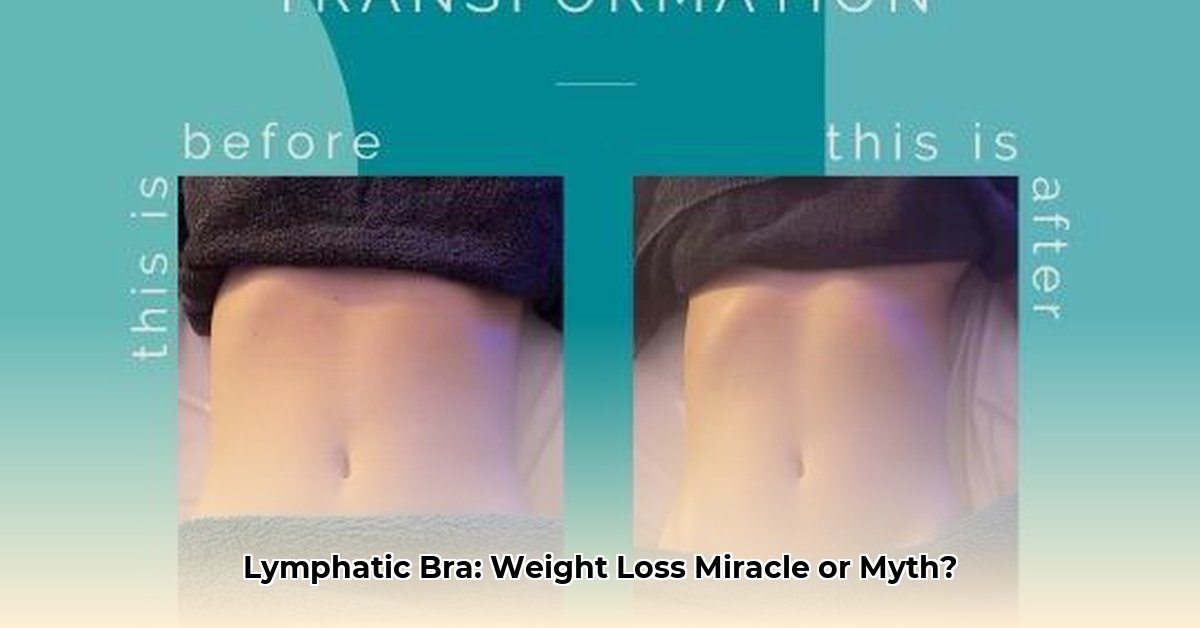
Understanding Lymphedema and Lymphatic Drainage
Lymphedema (lim-feh-DEE-muh) is swelling caused by a buildup of lymph fluid. Your lymphatic system, a network of vessels and nodes, normally filters this fluid, removing waste and excess fluid from your body. When the lymphatic system is impaired, fluid can accumulate, leading to swelling, often in the arms or legs. While lymphedema can sometimes be associated with weight gain due to the increased volume, it's crucial to understand that lymphatic bras are not a primary weight-loss method. They address a symptom (swelling) that might contribute to perceived weight gain, not the underlying cause of weight gain itself. This article reviews lymphatic bras and provides guidance on their selection and use for managing lymphedema.
How Lymphatic Bras Work
Lymphatic bras provide gentle compression to the affected area. This compression encourages lymphatic drainage by helping to move the excess fluid through the lymphatic system. Think of it as a gentle nudge to your body's natural drainage process. This improved drainage may lead to a reduction in swelling and improved comfort, particularly after surgery or for those managing chronic lymphedema. Does this mean weight loss? Not directly. The reduction in swelling might lead to a decrease in the overall circumference of the affected area, but this is not the same as actual weight loss through fat reduction.
Choosing the Right Lymphatic Bra: A Step-by-Step Guide
Selecting the appropriate lymphatic bra is crucial for effective and safe use. Follow these steps:
Consult Your Doctor or Lymphedema Therapist: This is the most critical step. They can assess your individual needs, confirm the diagnosis of lymphedema (if any), and recommend the appropriate compression level and type of garment. A proper diagnosis is vital before using any compression garment.
Accurate Measurements: Your healthcare professional will take precise measurements to ensure a perfect fit. An ill-fitting bra can be ineffective and potentially harmful. Accurate measurement is paramount to effective lymphatic drainage.
Compression Level: Compression levels are usually measured in millimeters of mercury (mmHg). Your healthcare provider will advise on the appropriate level for your condition. Higher compression isn't automatically better; comfort and proper fit are also crucial.
Material Selection: Choose breathable fabrics like cotton or microfiber blends that wick away moisture. Avoid materials that might irritate your skin, especially if you have sensitive skin.
Post-Surgical Considerations: If you've had surgery (mastectomy, liposuction), a specialized bra designed for your specific post-operative needs should be selected under professional guidance.
Lymphatic Bra Comparison: Key Features to Consider
The following table illustrates some key features. Note that this is a simplified comparison; individual experiences may vary significantly.
| Feature | Bra A (Example) | Bra B (Example) | Bra C (Example) |
|---|---|---|---|
| Compression Level | Moderate (20-25 mmHg) | Firm (25-30 mmHg) | Light (15-20 mmHg) |
| Material | Cotton/Spandex Blend | Breathable Microfiber | Moisture-Wicking Bamboo Blend |
| Design | Everyday Wear | Post-Surgical Support | Everyday/Light Activity |
| Breathability | Excellent | Good | Very Good |
| Price | $ | $$ | $$$ |
Note: These are examples only and should not be interpreted as endorsements of specific products.
Potential Risks and Cautions
While generally safe when used correctly, lymphatic bras can pose some risks:
- Pressure sores: Excessive pressure can restrict blood flow, leading to skin breakdown. Proper fit and regular skin checks are essential.
- Allergic reactions: Sensitivity to materials can occur. Conduct a patch test before extended use.
- Worsening of underlying conditions: Improper use can exacerbate pre-existing lymphatic or circulatory issues. Always seek professional guidance.
It is crucial to remember that lymphatic bras are not a substitute for medical care. Always consult with your physician or a certified lymphedema therapist before using a lymphatic bra or any compression garment.
Conclusion: A Supportive Role, Not a Miracle Cure
Lymphatic bras can be helpful adjuncts in managing lymphedema and improving comfort by assisting with lymphatic drainage. However, they are not a standalone weight-loss solution. Choosing the right bra, understanding the risks, and adhering to your healthcare provider's guidance are crucial for safe and effective use. Prioritize professional medical advice and a holistic health approach for effective weight management and lymphedema treatment.
Additional Resources
(Links to reputable medical organizations and relevant studies would be included here.)